Intense Pulse Light (IPL) For Photo-damaged Skin
The IPL treatment or photo facial is the treatment of choice for patients who desire younger-looking skin but aren’t willing or able to spend even a few days in recovery. The IPL is a safe and clinically proven treatment for vascular and pigmented problems in the skin.
IPL can be used to treat lines and wrinkles; pigmentation; loss of volume in the skin; veins and Rosacea. The areas that can be treated are the face, neck, chest, hands and even feet.
Intense Pulse Light (IPL) For Photo-damaged Skin Q&A
Controlled pulses of intense light are directed into the upper skin layer where the light energy is absorbed by the melanin in the pigmented areas and the haemoglobin in the red blood cells. The light energy is then converted into heat which destroys the parts of the cells that contains the melanin and damages the walls of the blood vessels that supply the vascular damaged area. This is called “Selective Photothermolysis”. The IPL is carefully controlled to produce only the right pulse length and energy in order to destroy the targets without damaging the surrounding tissue. The heat from the light also heats up the water in the skin which excites the fibroblasts and causing them to produce new collagen. As a result IPL treatment is also good for plumping up the skin to restore volume and reducing the appearance of lines and wrinkles.
A treatment takes less than 30 minutes. There is some level of discomfort, though it varies from person to person, depending on their individual pain threshold. Most are treated without anesthesia. However, if needed, a topical anesthetic can be applied about 30 minutes prior to the procedure.
There is very little or no downtime, that’s the great thing about IPL treatment. Rosacea patients may be a little redder, but in most cases any redness subsides within 24 hours. Very rarely, redness lasts up to three days. Just in case of unforeseen problem, we often ask people to have their first treatment on a Friday so that Monday it can be covered with a suitable makeup.
Most patients see some improvement even after the first treatment. Depending on the severity of the conditions being treated and the skin types usually a minimum of three treatments 3 weeks apart are recommended. Maintenance treatments will be necessary every 12 months or so to continue with the results.
The protocol is generally five treatments at three-week intervals. Five is not a magic number, but one that seems to give the greatest amount of relief with the least number of treatments.
The treatments cost £300 per session for full face treatment; £200 for half face treatment.
Some laser, like the tunable dye laser, are, of course, helpful in treating some chronic redness that may occur with sun damage, as well as the fine , spider vessels that you can see. But when a person has general redness, treatment with lasers by and large either makes them worse or doesn’t make them any better. That’s because the flushing is a product of vessels of that size. Also, the mean depth of penetration of even the tunable dye laser, which has been the gold standard treatment for rosacea,is .37. But because the epidermal and the dermal thickness in the face is 1.3 to 1.5 millimeters, you couldn’t get the focal length down to the dermal capillary bed where all the abnormal vessels are. Plus, treatment of general facial redness with the tunable dye laser is so severe and creates such a horrible purpura, most patients would never submit to it.
Like all machines of this type, there are potential risks associated with their use. But in the hands of our experts the risks are very low. Swelling that lasts three to five days occasionally occurs, most commonly in severely sun-damaged skin due to reduced quality of connective tissues around the blood vessels. To avoid this, it’s very important to take a complete history of patients – where they grew up , exposure to the sun etc. A patient’s history will determine the parameters that control all aspects of the light pulse-including duration, pattern, delay time, and energy level-used during treatment.
We don’t treat clients who are pregnant,or those who have autoimmune diseases with a low T-cell count, or who have taken Accutane within six months. Patients with any hepatic lesions or bacterial infections cannot be treated. Even though there are many photoallergic medications (including antibiotics, anti-anxiety drugs, birth control pills, and anti-hypersensitive medications), we haven’t seen a problem treating individuals who are taking them.
We ask patients not to put makeup on until the next day. But other than avoiding the sun and wearing sunscreens, that’s about it.
Before and After Pictures
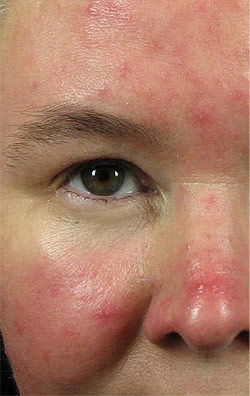
IPL for Rosacea, Before
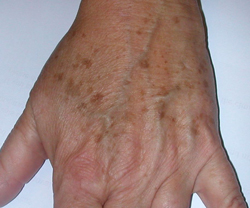
IPL for Rosacea, Before
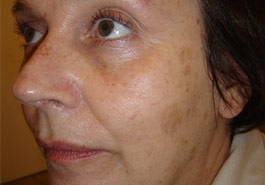
IPL for Rosacea, Before
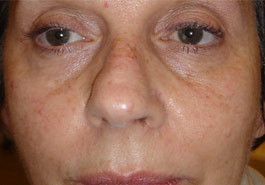
IPL for Rosacea, Before
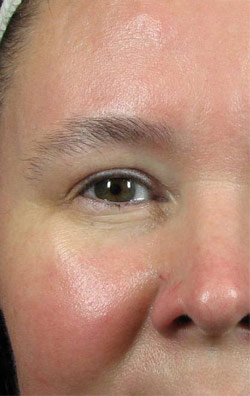
IPL for Rosacea, After

IPL for Rosacea, After
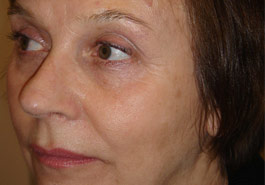
IPL for Rosacea, After
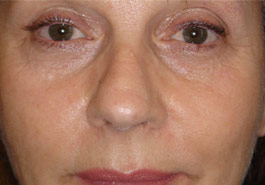
IPL for Rosacea, After
What should I do next if I want Intense Pulse Light (IPL) For Photo-damaged Skin?
It couldn’t be easier please call us on 02920 644 644 or Contact / email us to arrange a consultation in our Cardiff clinic.
If you have more questions we will be happy to call you back at a more convenient time.
